#nature communications
Text


It’s not easy to swim 175 km (109 mi.) when you’re starving to death. It’s not easy either to try to survive when you’re shedding body weight at a rate of 1 kg (2.2 lbs.) a day.
And it might be hardest — or at least most tragic — of all if you’re a nursing mom and your calorie intake has dropped so low that you can no longer produce the milk you need to care for your young.
As a new paper in Nature Communications reveals, all of those challenges and more are facing the world’s polar bears, thanks to vanishing sea ice in our warming world, denying the animals a platform that they need to hunt for seals.
If the trend isn’t reversed soon, the estimated 26,000 polar bears in the wild could start to lose their hold on survival before the middle of this century.
The researchers were less interested in establishing the fact of the bears’ food plight; scientists are already aware of that problem.
What they were more focused on learning was both how gravely the nutritional loss is affecting the animals’ health and the alternative food sources they’re scrounging for on land.
To do their work, the scientists followed 20 different polar bears in Manitoba, Canada, from 2019 to 2022, fitting them with GPS trackers and video collars and periodically tranquilizing them and analyzing their blood, body mass, daily energy expenditure — basically a measure of calories coming in versus calories going out — and more.
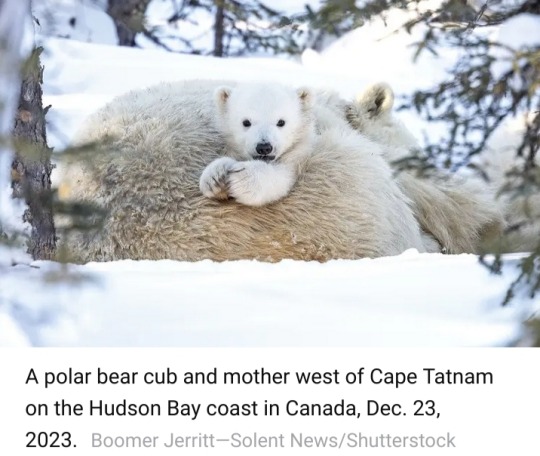
“The polar bears in Hudson Bay [Canada] are probably at the edge of the range at which they can survive right now,” says Anthony Pagano, a research biologist with the U.S. Geological Survey and the lead author of the paper.
“Most of the modeling work suggests that around 2050, they are going to be on land and away from their primary habitat [on the ice].”
The contraction in range of the Hudson Bay community is likely to be reflected in the ranges of the 18 other polar bear subpopulations scattered throughout the Arctic as well.
Across the arc of the study, the data Pagano and his colleagues gathered was troubling.
Weight loss varied from bear to bear, with the daily loss of 1 kg representing just an average.
Some of the subject animals dropped up to 1.7 kg (3.75 lbs) every 24 hours.
That may not seem like much when an adult male polar bear can tip the scales at 550 kg (1,200 lbs) and a female at 320 kg (700 lbs), but it can add up fast.
And with less available to eat, the hungry bears have to travel farther and farther distances to find their next meal.

The individual that swam 175 km — a young female — set the record among the bears studied, but another, older female also covered 120 km (75 mi).
The endurance swims in search of food are energy-intensive and often fruitless for the bears.
They are efficient hunters when they’ve got the purchase of ice beneath them, Pagano and his colleagues explain, but they are clumsy when they are going after seals and trying to swim at the same time.
That leaves them scavenging on land for foods they would not ordinarily eat — and getting little payoff for their efforts.
“Polar bears are feeding on ducks and geese — catching them when they’re flightless and molting — as well as on their eggs,” Pagano says.
Other foods on the desperate bears’ menus included berries and other vegetation, bones, antlers and, in one case, a beluga whale carcass.
None of that fare is as calorie-rich as a steady diet of live, blubber-packed seals.
Some of the bears vigorously sought out these alternative sources of nutrition; others opted for a different strategy: resting and conserving the energy contained in their body mass.
The latter approach costs stored calories, but so does the former, as all of the plodding and searching burns through energy too.
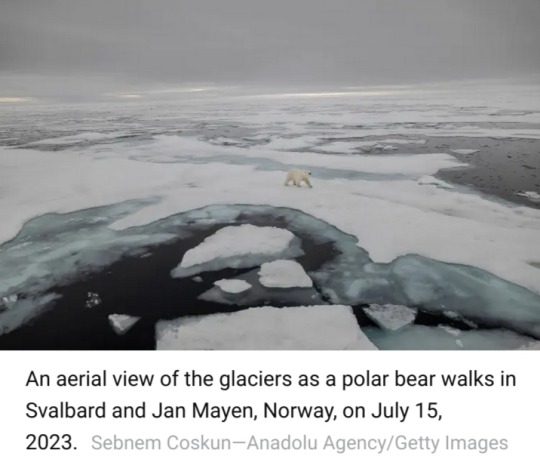
“The amount of body tissue they were burning to try and find those terrestrial foods was basically the same as what they’d get from eating those terrestrial foods,” Pagano says. “So there’s no actual benefit.”
The researchers were surprised to find that the bears were going through not just fat stores to compensate for the poor rations but lean muscle tissue too.
Pagano is not certain why their metabolisms would adopt that strategy, but he has some ideas.
“There's some thought that burning lean body mass might be more energetically efficient in some respects relative to burning body fats,” he says.
“Also, conserving their body fat might provide them better thermal regulation once the winter and the ice return.”
That seasonal freeze-over is shorter than it used to be — though not by a lot.

In the 1980s, polar bears were on land for about 110 days out of the year, with no need to eat terrestrial foods since the fat deposits they’d accumulate thanks to wintertime seal-hunting was enough to carry them the rest of the year.
Now they're off the ice for 130 days on average.
It’s a measure of the nutritional knife’s-edge on which the bears operate that just 20 days can make the difference between whether they live and thrive or starve and die.
The individuals most likely to perish when food supplies are poor are young adults — due to their less-developed hunting skills — and cubs, whose principal source of nutrition, their mother’s milk, can vanish in lean times.
“If females are fasting for extended periods, they will actually stop lactating,” says Pagano.
Full-grown bears are by no means immune to danger, however.
The authors cite earlier research predicting that the adult male population could decrease by 24% if the ice-free summer season increases to 180 days.
This is especially so given the enormous energy intake — about 22,500 calories per day — that the big males need to maintain their body weight.
Polar bears aren’t the only species menaced by these findings. Humans are in harm’s way too.
The more time bears spend off the ice and on land, the greater the likelihood they will wander into cities and towns in search of something to eat — and residents could easily be hurt or attacked if they get in the way of the hungry animals.
People might also even be seen as sources of prey.
“When polar bears are on land, they act like other bears and become omnivores,” says Pagano. “It does raise the potential for human-bear interactions.”
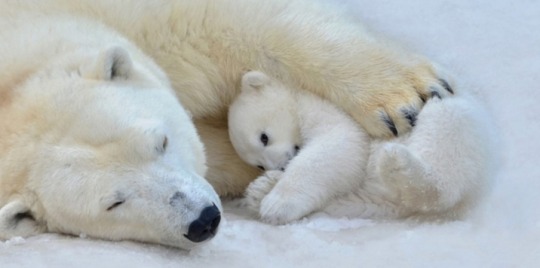

🆘🐻❄️🥺
#polar bears#sea bears#Ursus maritimus#U.S. Geological Survey#Manitoba#Canada#Nature Communications#climate change#wildlife conservation#food source#nutritional loss#animal health#marine mammals#Arctic Circle
9 notes
·
View notes
Photo
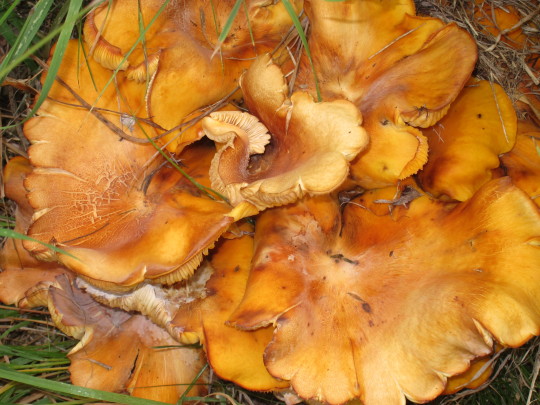
feel free to reblog
© Soeren Baptism
@soerenbaptism (instagram)
www soerenbaptism com for more
#soerenbaptism#soeren baptism#goblincore#mushroom#shroom#pilz#shroomcore#mushroomcore#forestcore#natural#nature communications#naturecore#meadowcore#treecore#woods#wicca#wiccan#wiccapedia#wicca aesthetic#wiccablr#wiccac#burja#dirtcore#goblincoreaesthetic#goblincore aesthetic#Goblin time#goblin art#cottage garden#country cottage#grandmacore
98 notes
·
View notes
Text
UV lamps in nails salon
Hello!
Just yesterday, I saw an article with this headline:

It caught my attention because, in Spain, where I currently live, it is fashionable to go to the nail salon every 2 weeks and have a perfect manicure.
The article discusses how UV lamps used to dry nails can cause DNA alterations and cell death. In addition, they found that a single 20-minute session led to 20-30% of cell death, and 3 consecutive 20-min exposures caused 65-70% of cell death. These UV lamps use a wavelength of 340 to 395 nm.
Higher levels of somatic mutations were revealed in the irradiated cells, with similar patterns in skin cancer patients.
Do you guys get frequent manicures? I'll read you in the comments.
#scientific writing#UV#chemistry#nails care#nailcare#medical writing#nature communications#dna damage#cell death#scientists#science
9 notes
·
View notes
Text
Per ora sembra funzionare per i topolini, per cui no a facili entusiasmi. Però la strada verso la prevenzione del contagio per via nasale è interessante.
2 notes
·
View notes
Text



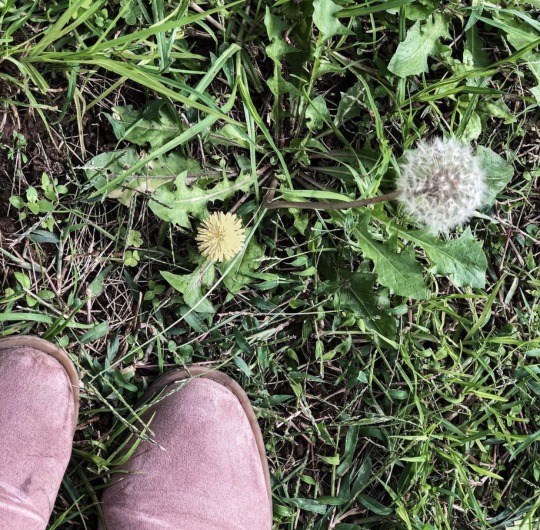
Strokes of nature
#nature#aesthetic#that girl#blogger#lifestyelblogger#journal#routine#photogram#photoshoot#animals#nature magic#nature moodboard#nature beauty#nature view#nature communications#nature connection#nature colors#nature conservation#nature and landscape#nature spirits
2 notes
·
View notes
Text
Science News Roundup: South Korea's Innospace to launch rocket from Brazil in December -official; China finds signs of water in moon's 'Ocean of Storms' and more
Science News Roundup: South Korea’s Innospace to launch rocket from Brazil in December -official; China finds signs of water in moon’s ‘Ocean of Storms’ and more
Following is a summary of current science news briefs.
Isolated Greenland polar bear population adapts to climate change
An isolated population of polar bears in Greenland has made a clever adaptation to the decline in the sea ice they depend upon as a platform for hunting seals, offering a ray of hope for this species in at least some locales in the warming Arctic. This population of several…

View On WordPress
#Arctic#Brazil#China#Chinese#Covid#December#finds#Greenland#Innospace#Koreas#Launch#Moon#Moons#Moura#Nature Communications#News#ocean#official#omicron#rocket#Roundup#Science#Signs#South#South Korea&039;s#South Korean#storms#water
2 notes
·
View notes
Quote
India is losing $101bn annually due to heat - the most in the world - a report by Nature Communications has found. The lost labour hours due to increasing heat and humidity could put approximately 2.5-4.5% of GDP at risk by 2030, up to $250bn, according to a 2020 McKinsey report. The number of daylight hours - during which outdoor work is unsafe - will also increase approximately 15% by 2030, compared to a decade earlier, the report says.
‘Heatwave: India's poor bear the brunt of blistering temperatures’, BBC
3 notes
·
View notes
Text










The Beautiful HolyBriBri
#HolyBriBri#adult entertainment#big t1ts#big tiddy community#big tiddy problems#natural titts#big tiddy committee#huge natural melons#huge titts
11K notes
·
View notes
Text

go to my instagram!
#bdsmplay#bdsmkink#bdsmgirl#bd/sm breeding#bd/sm pet#bd/sm kink#bd/sm slave#bd/sm community#+18 or +adult only#18+ only#onlyf@nz#onlyfans tease#onlyfanz#onlytease#sexy content#sexy pose#sexy tease#sexy titts#perfect breast#massive breasts#sexy breast#natural body#curvy brunette#lovely breasts#submisive and breedable#great breasts#hot breast#huge natural breasts#gigantic breasts#natural titts
7K notes
·
View notes
Text
When I’m on “code red🩸” of the month, I get super horny and my boobs super tender and sensitive. It’s achy and it’s begging to be loved so, so much. Will you love them and make me feel good?
#daddy's good girl#k!nk community#sexy titts#sexy content#18+ content#natural titts#daddy’s babygirl
5K notes
·
View notes
Text
okay. listen. if you ever find yourself falling into a new ideological circle, pay attention. if you notice that you’re among people who define themselves as part of an “in-group” with a pre-prepared human “enemy” to constantly rail against—if everyone fantasizes about the mental state of these loathsome monsters, if they participate in witch hunts or (perhaps worse) poke bears and court harassment on purpose to comfort each other over—get the fuck out. you haven’t been enlightened to some grand conspiracy, there are no evil “enemies” or “degenerates” trying to rip apart the fabric of society, and you do not have the moral duty to “enlighten” anyone to whatever you think the “truth” is. it’s neither safe nor normal to spend hours of your day fighting with strangers on the internet
a lot of people wear this shit like a badge of honor, but it’s also not normal to hide your “in-group” status as a form of martyrdom, relishing when the “enemy” slips up around you. it’s comforting in the moment, but in the long run, you’re alienating yourself from the world outside of your bubble. the more you alienate yourself, the more vulnerable and lonely you become, and the harder it is to reject the comfort of belonging to the “in-group”
i’m writing this from the perspective of someone who grew up in a cesspool of awful, cult-like rural churches—which is its own situation—but i see similar shit happening in online communities all the time, both within and 800 miles outside of my own ideological principles. yes, every toxicass radfem i block seems to be trapped in a version of this vicious cycle, but i also see it happening in random queer circles and niche fandom communities. no one is immune, not even me. i’ve watched people fall into this shit and never make it out. be careful
#some ideologies come pre-baked with this nonsense#because they naturally revolve around an in-group and an out-group#but i swear to god people will start acting like this over fucking#anime shipping wars#which probably seems harmless to most people#but those communities skew very young#and i have no doubt that it can be psychologically damaging#no matter how inconsequential it seems to my jaded 26 year old brain#me when i make a post
11K notes
·
View notes
Text


Researchers at North Carolina State University have developed a robotic gripping device that is gentle enough to pick up a drop of water, strong enough to pick up a 6.4 kilogram (14.1 pound) weight, dexterous enough to fold a cloth, and precise enough to pick up microfilms that are 20 times thinner than a human hair.
In addition to possible manufacturing applications, the researchers also integrated the device with technology that allows the gripper to be controlled by the electrical signals produced by muscles in the forearm, demonstrating its potential for use with robotic prosthetics.
“It is difficult to develop a single, soft gripper that is capable of handling ultrasoft, ultrathin, and heavy objects, due to tradeoffs between strength, precision and gentleness,” says Jie Yin, corresponding author of a paper on the work and an associate professor of mechanical and aerospace engineering at NC State.
“Our design achieves an excellent balance of these characteristics.”
The design for the new grippers builds on an earlier generation of flexible, robotic grippers that drew on the art of kirigami, which involves both cutting and folding two-dimensional sheets of material to form three-dimensional shapes.
“Our new grippers also use kirigami, but are substantially different, as we learned a great deal from the previous design,” says Yaoye Hong, co-author of the paper and a recent Ph.D. graduate from NC State.
“We’ve been able to improve the fundamental structure itself, as well as the trajectory of the grippers – meaning the path at which the grippers approach an object when grabbing it.”
The new design is able to achieve high degrees of strength and gentleness because of how it distributes force throughout the structure of the gripper.
“The strength of robotic grippers is generally measured in payload-to-weight ratio,” Yin says.
“Our grippers weigh 0.4 grams and can lift up to 6.4 kilograms. That’s a payload-to-weight ratio of about 16,000.
That is 2.5 times higher than the previous record for payload-to-weight ratio, which was 6,400.
Combined with its characteristics of gentleness and precision, the strength of the grippers suggests a wide variety of applications.”

Another benefit of the new technology is that its attractive characteristics are driven primarily by its structural design, rather than by the materials used to fabricate the grippers.
“In practical terms, this means that you could fabricate the grippers out of biodegradable materials, such as sturdy plant leaves,” says Hong.
“That could be particularly useful for applications where you would only want to use the grippers for a limited period of time, such as when handling food or biomedical materials.
For example, we’ve demonstrated that the grippers can be used to handle sharp medical waste, such as needles.”
The researchers also integrated the gripping device with a myoelectric prosthetic hand, meaning the prosthesis is controlled using muscle activity.
“This gripper provided enhanced function for tasks that are difficult to perform using existing prosthetic devices, such as zipping certain types of zippers, picking up a coin, and so on,” says Helen Huang, co-author of the paper and Jackson Family Distinguished Professor in the Joint Department of Biomedical Engineering at NC State and the University of North Carolina at Chapel Hill.
“The new gripper can’t replace all of the functions of existing prosthetic hands, but it could be used to supplement those other functions,” Huang says.
“And one of the advantages of the kirigami grippers is that you would not need to replace or augment the existing motors used in robotic prosthetics. You could simply make use of the existing motor when utilizing the grippers.”
In proof-of-concept testing, the researchers demonstrated that the kirigami grippers could be used in conjunction with the myoelectric prosthesis to turn the pages of a book and pluck grapes off a vine.
“We think the gripper design has potential applications in fields ranging from robotic prosthetics and food processing to pharmaceutical and electronics manufacturing,” Yin says.
“We are looking forward to working with industry partners to find ways to put the technology to use.”
The paper, “Angle-programmed tendril-like trajectories enable a multifunctional gripper with ultradelicacy, ultrastrength, and ultraprecision,” is published open access in the journal Nature Communications.
The paper was co-authored by Yao Zhao and Yanbin Li, postdoctoral researchers at NC State; Joseph Berman, a Ph.D. student at NC State; and Yinding Chi, a former Ph.D. student at NC State.
The work was done with support from the National Science Foundation under grants 2005374 and 2221479.
https://news.ncsu.edu/2023/08/robo1tic-grippers/
—
youtube
Universal and multifunctional soft robotic grippers that are gentle yet strong and precise
2 August 2023
#robotic grippers#robotic gripping device#North Carolina State University#Jie Yin#Youtube#kirigami#myoelectric prosthetic hand#kirigami grippers#Nature Communications#National Science Foundation#Yao Zhao#Yanbin Li#Joseph Berman#Yinding Chi
1 note
·
View note
Text

#lgbtq+#gay#lesbian#bisexual#trans#queer#trans men#trans women#non binary#pansexual#asexual#pride#pride month#transgender#transfem#nonbinary#trans joy#trans community#trans beauty#information#learning#fyi#history#nature#science#the more you know
3K notes
·
View notes
Text

I woke up horny with my fingers in the cookie jar
3K notes
·
View notes
Text

Hiii im Elle 👋😻
If you want to see more of me, check out my onlyfans - I post daily and answer every message ☺️💕
Tell me you're from Tumblr and get a freebie 💛
#18+ only#adult model#altgirl#big eyes#big tiddy committee#big tiddy community#big tiddy gf#br33dable#brown eyes#contentcreator#curvy body#fat tiddies#girls with tattoos#juicy body#long hair#natural bewbs#spicy links#spicy content#tattoos#ellefoxxx
6K notes
·
View notes
Text










The Beautiful HolyBriBri
#HolyBriBri#adult entertainment#big t1ts#big tiddy community#big tiddy problems#natural titts#big tiddy committee#huge natural melons#huge titts
6K notes
·
View notes